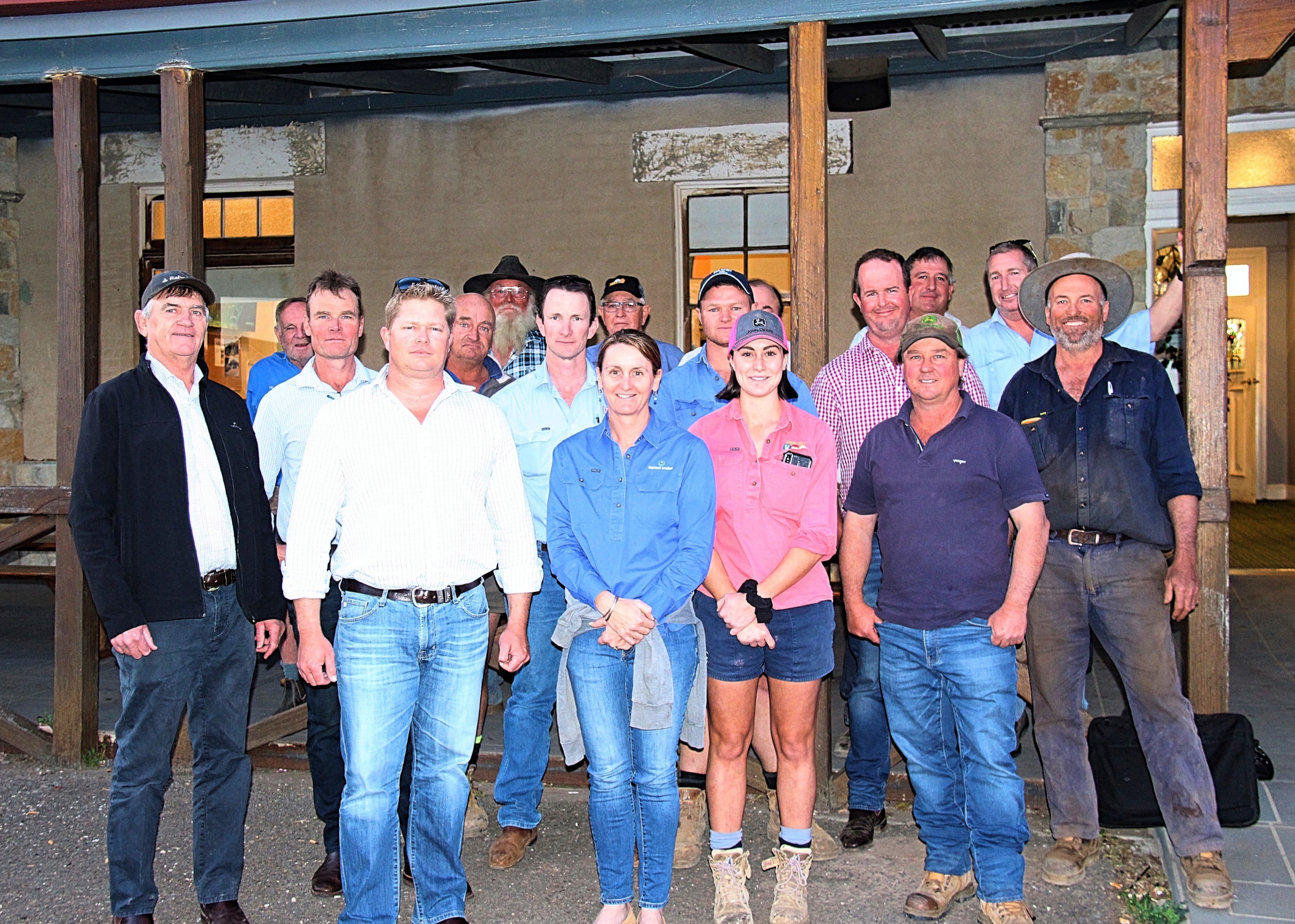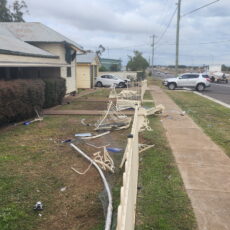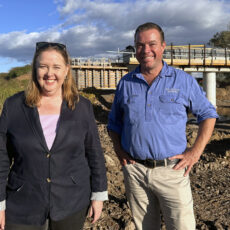Namoi Water held is annual general meeting at the Baan Baa Railway Hotel last Tuesday.
Brendon Warnock of ‘Warilea’, Narrabri was officially appointed to the position of Namoi Water chair and Joe Martin of ‘Tahlee’, Mullaley took up the role of vice-chair.
“It’s an exciting prospect,” said Mr Warnock about his new role at the helm of the peak industry group for irrigators in the Namoi Valley.
“It’s a good opportunity to be involved in some pretty serious issues.
The Narrabri farmer previously served as Namoi Water’s vice-chair under Wee Waa’s Steve Carolan.
“Steve did a great job as chair, he’s a really great leader and he will remain on the board as well, so he’ll continue to have a role in the running of the organisation,” said Mr Warnock.
“Also at the meeting, Matt Norrie stood down from the board after nine years and he was thanked for his service.”
Mr Warnock said he looked forward to working with Namoi Water’s executive officer, Jon-Maree Baker.
“She’s a really high performer in the water space and it’s going to be a great opportunity to work more closely with her and help carry the organisation over this next couple of years, I’m hoping that we can really achieve some good results for irrigators and for the local community.”
Currently one of the challenges faced by Namoi Valley irrigators relates to the NSW government’s proposed floodplain harvesting policy.
Floodplain harvesting is the capture and use of water flowing across a floodplain and is an important source of water for the agricultural industry.
However, it only occurs when we are in flood or after a major rain event, the last time this happened was following the 2011/12 flood.
“There hasn’t really been any floodplain harvesting since then, so it’s something that only happens sporadically,” added Mr Warnock.
The idea of licensing floodwater isn’t new but a 2018 policy change means that the ‘capture of rainfall run-off’ is set to come under the floodplain harvesting plan and therefore means farmers will face a new set of rules, more licence fees and restrictions.
Angry farmers have dubbed it – ‘a new tax on rainfall’.
“Regulating rainfall is really problematic,” said Mr Warnock.
“They want to monitor and regulate the utilisation of rainfall – but monitoring and regulating comes at a significant cost, and that cost will be borne by farmers.
“The real crux of the problem is that when they (NSW Government) first set out to regulate floodplain harvesting, the intent was to monitor and regulate the interception of water from the floodplains – that was quite a manageable change and not unexpected,” said Mr Warnock.
“But the problem is that they’ve included rainfall run-off in the calculation and so when you include rainfall run-off, it means that rather than it being something that happens occasionally, it’s something that happens regularly.
“By unnecessarily regulating rainfall, it’s just going to add another regulatory and cost burden onto farmers who are already doing it tough with the drought,” said Mr Warnock.
“The other part that makes it even more disappointing is there’s no acknowledgement of the fact that rainfall run-off is increased on an irrigation farm because of the type of
farming that we do.
“Because our farms are developed with laser levelled fields and we irrigate them and the surface isn’t covered in stubble – when we do get rain, we tend to get more run-off than the neighbouring properties that aren’t developed for irrigation.”
Mr Warnock said there would be no new cost or regulatory burden for other types of farms such as forestry, dryland or grazing properties when it comes to the way they capture and store rainfall run-off into their soil profiles.
“Regulating rainfall is a lot of work, a lot of detail and it’s not really the purpose of the legislation which was to regulate floodplain harvesting,” added Mr Warnock.
On Friday September 27, News Limited newspapers reported that the Federal Government was providing $7.9 million to the NSW Government to help complete the floodplain harvesting plan, as well as granting an 18-month extension.
“The state was expected to develop a Floodplain Harvesting Policy by the end of 2019 to license the capture of floodwater, but following a new agreement The Daily Telegraph can reveal the plan is now not due to be completed until June 2021,” the News Limited report stated.
Mr Warnock said the Namoi Water AGM also included a question and answer session about water meters and a presentation from Rural Adversity Mental Health Program coordinator, Letitia Cross.
“She talked about some mental health guidance and tips for people to look after each other and look out for the mental health of neighbours and friends, in this challenging time.”
In other water news, The NSW Irrigators’ Council is seeking a commitment from the Murray-Darling Basin Authority that ‘the impact of the Basin Plan will not be almost doubled, as a result of legislative interpretation’.
NSWIC has written to NSW Water Minister Melinda Pavey, Federal Water Minister David Littleproud and the MDBA to raise the concerns.
“The MDBA’s interpretation may lead to an additional 2000 gigalitres of water being taken from regional NSW communities and under Commonwealth control – nearly double what was committed under the whole of the Basin Plan (2750GL),” said a NSWIC statement.
“That water is not just for food and crop production, but potentially for critical town water supplies and other drought management considerations.
“The new interpretation also potentially takes significant power away from the State Minister to manage NSW water resources – significantly hampering the ability of NSW to manage our water security, key ecological assets, as well as to operate the river system efficiently.
“It’s a complex legal issue, the details of which we are currently working through with relevant experts to ensure the impacts of the Basin Plan are only those committed to, intended and agreed upon,” said the NSWIC statement.
NSWIC is seeking a commitment that the NSW Government continues to operate under its legal Plan Limits and the Commonwealth acknowledge that Plan Limit is the baseline for the Basin Plan reform.
“NSWIC is concerned that through this interpretation by the MDBA, NSW may lose control of 2000 billion litres of water that then won’t be available for NSW to decide to use for outcomes for NSW, whether it is critical human need, food and crop production, industry or even State environmental priorities.
“NSWIC simply asks for NSW to retain control of this 2000 gigalitres.”
To order photos from this page click here










